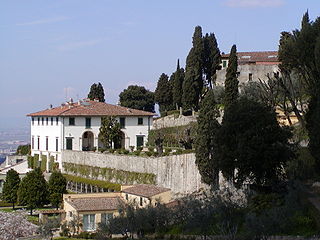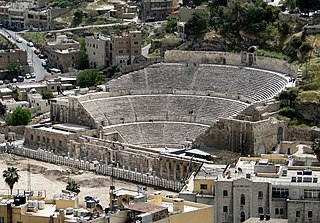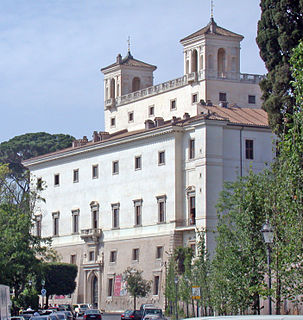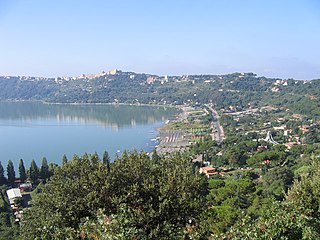
Gnaeus Pompeius Magnus, known by the anglicisation Pompey the Great, was a leading Roman general and statesman, whose career was significant in Rome's transformation from a republic to empire. He was for a time a political ally and later enemy of Julius Caesar. A member of the senatorial nobility, Pompey entered a military career while still young and rose to prominence serving the later dictator Sulla as a commander in Sulla's civil war, his success at which earned him the cognomen Magnus – "the Great" – after Pompey's boyhood hero Alexander the Great. His adversaries also gave him the nickname adulescentulus carnifex for his ruthlessness. Pompey's success as a general while still young enabled him to advance directly to his first consulship without meeting the normal cursus honorum. He was consul three times and celebrated three Roman triumphs.

Regent's Park is one of the Royal Parks of London. It occupies high ground in north-west Inner London, administratively split between the City of Westminster and the Borough of Camden. It contains Regent's University and London Zoo.

A villa is a type of house that was originally an ancient Roman upper-class country house. Since its origins in the Roman villa, the idea and function of a villa has evolved considerably. After the fall of the Roman Republic, villas became small farming compounds, which were increasingly fortified in Late Antiquity, sometimes transferred to the Church for reuse as a monastery. Then they gradually re-evolved through the Middle Ages into elegant upper-class country homes. In modern parlance, "villa" can refer to various types and sizes of residences, ranging from the suburban semi-detached double villa to residences in the wildland–urban interface.

The Villa d'Este is a 16th-century villa in Tivoli, near Rome, famous for its terraced hillside Italian Renaissance garden and especially for its profusion of fountains. It is now an Italian state museum, and is listed as a UNESCO World Heritage Site.

Roman theatres derive from and are part of the overall evolution of earlier Greek theatres. Indeed, much of the architectural influence on the Romans came from the Greeks, and theatre structural design was no different from other buildings. However, Roman theatres have specific differences, such as generally being built upon their own foundations instead of earthen works or a hillside and being completely enclosed on all sides.

Villa Borghese is a landscape garden in Rome, containing a number of buildings, museums and attractions. It is the third largest public park in Rome after the ones of the Villa Doria Pamphili and Villa Ada. The gardens were developed for the Villa Borghese Pinciana, built by the architect Flaminio Ponzio, developing sketches by Scipione Borghese, who used it as a villa suburbana, or party villa, at the edge of Rome, and to house his art collection. The gardens as they are now were remade in the late 18th century.

The Villa Giulia is a villa in Rome, Italy. It was built by Pope Julius III in 1551–1553 on what was then the edge of the city. Today it is publicly owned, and houses the Museo Nazionale Etrusco, a collection of Etruscan art and artifacts.

The Theatre of Pompey was a structure in Ancient Rome built during the latter part of the Roman Republican era by Pompey the Great. Completed in 55 BC, it was the first permanent theatre to be built in Rome.

Bernardo Buontalenti, byname of Bernardo Delle Girandole, was an Italian stage designer, architect, theatrical designer, military engineer and artist.

The Villa Doria Pamphili is a seventeenth-century villa with what is today the largest landscaped public park in Rome, Italy. It is located in the quarter of Monteverde, on the Gianicolo, just outside the Porta San Pancrazio in the ancient walls of Rome where the ancient road of the Via Aurelia commences.

The Villa Medici is a Mannerist villa and an architectural complex with a garden contiguous with the larger Borghese gardens, on the Pincian Hill next to Trinità dei Monti in Rome, Italy. The Villa Medici, founded by Ferdinando I de' Medici, Grand Duke of Tuscany and now property of the French State, has housed the French Academy in Rome since 1803. A musical evocation of its garden fountains features in Ottorino Respighi's Fontane di Roma.

The Villa Poppaea is an ancient luxurious Roman seaside villa located in Torre Annunziata between Naples and Sorrento, in Southern Italy. It is also called the Villa Oplontis or Oplontis Villa A. as it was situated in the ancient Roman town of Oplontis.

A sylvan theater—sometimes called a greenery theater —is a type of outdoor theater situated in a wooded (sylvan) setting. Often adorned with classical motifs, a sylvan theater may substitute a simple green lawn for built seating and can include elaborate arrangements of shrubs, flowers and other greenery. These alfresco stages may be features of grand formal gardens or parks, or of more intimate settings, and may be intended for either public or private use.

The Villa di Castello, near the hills bordering Florence, Tuscany, central Italy, was the country residence of Cosimo I de' Medici, Grand Duke of Tuscany (1519-1574). The gardens, filled with fountains, statuary, and a grotto, became famous throughout Europe. The villa also housed some of the great art treasures of Florence, including Sandro Botticelli's Renaissance masterpieces The Birth of Venus and Primavera. The gardens of the Villa had a profound influence upon the design of the Italian Renaissance garden and the later French formal garden.

The Italian Renaissance garden was a new style of garden which emerged in the late 15th century at villas in Rome and Florence, inspired by classical ideals of order and beauty, and intended for the pleasure of the view of the garden and the landscape beyond, for contemplation, and for the enjoyment of the sights, sounds and smells of the garden itself.

The giardino all'italiana or Italian garden is stylistically based on symmetry, axial geometry and on the principle of imposing order over nature. It influenced the history of gardening, especially French gardens and English gardens.

Frederiksberg Allé is a tree-lined avenue which runs through the southernmost part of the Frederiksberg district of Copenhagen, Denmark. It connects Vesterbrogade at Værnedamsvej to Frederiksberg Runddel in front of the main entrance to Federiksberg Gardens. It was originally constructed in 1704 as the king's private road leading to his new summer residence, Frederiksberg Palace. It developed into the backbone of an entertainment district in the mid 18th century, and has continued to be associated with theatres until the present day. The avenue is lined with two double rows of linden trees and bisects Sankt Thomas Plads, a small round plaza, shortly after its departure from Vesterbrogade.

The Porticus of Pompey was a large quadriporticus located directly behind the scaenae frons of the Theatre of Pompey. It enclosed a large and popular public garden in the ancient city of Rome. The porticus was finished in 62 BC. and has a history spanning hundreds of years. The colonnades contained arcades and gallaries that displayed sculptures and paintings collected from years of war campaigns of its patron and builder, Gnaeus Pompeius Magnus. Over time the site became rows of shops that occupied what were the galleries and arcades. As the ground level rose from constant flooding from the Tiber River, much of the original architectural elements were re-used by shop owners to adhorn their structures at higher levels. Today, many of these shops still exist and fragments of the old theatre and porticus can be seen embedded in the ancient walls of many of the buildings.

The Palace of Domitian was built as Roman emperor Domitian's official residence in 81-92 AD and was used as such by subsequent emperors. Its remains sit atop and dominate the Palatine Hill in Rome, alongside other palaces.

The Villa of Domitian, known as Albanum Domitiani or Albanum Caesari in Latin, was a vast and sumptuous Roman villa or palace built by Emperor Titus Flavius Domitian. It was situated 20 km outside Rome, in the Alban Hills, in the ancient territory of Ager Albanus.